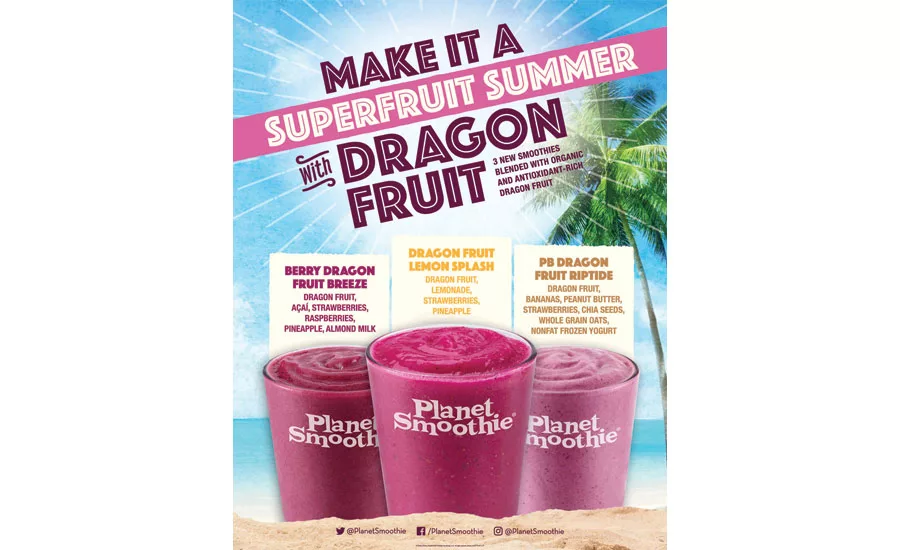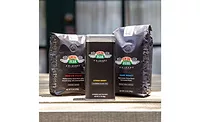Foodservice operators offering authentic experience
Health and wellness driving beverage innovations

As the ever-changing landscape of the foodservice industry continues to evolve, providers hoping to stay ahead of the curve of consumers’ wants and needs must change along with it. Dining out — still an important part of Americans’ lives — is viewed by millennials and Generation Z as an opportunity to spend their money on authentic experiences with family and friends. More adventurous consumers are demanding luxurious, upscale offerings or traditional favorites offered in new ways.
Miranda Lambert, research analyst at Chicago-based Euromonitor International, describes how restaurants have had to adapt from previous generations who favored menu consistency.
“If people choose to go out instead of order delivery, they’re looking for something experiential, authentic and/or personalized to their needs,” she says. “This has manifested in several ways. Consumers are looking for Instagrammable experiences like customized latte art, tableside guacamole and martinis with giant cotton candy that melts like magic when the drink is poured.”
David Henkes, senior principal at Chicago-based Technomic, agrees.
“When consumers do go out, they increasingly want an experience,” he says. “The industry is shifting into two need states: convenience/quick and experiential. Particularly within the experiential side of the industry, it’s all about a unique, new and different occasion that the consumer increasingly is demanding.”
These challenges facing the industry mostly have stagnated growth. Real growth is hovering at just above 1 percent, with traffic gains mostly nonexistent. According to Chicago-based Mintel’s market forecast, total revenues at U.S. restaurants are expected to grow to $631.2 billion in 2019; this represents a 34 percent growth in sales since 2013. Mintel forecasts this growth will continue after 2019 with revenues to reach $741 billion by 2023, which represents an estimated 22 percent growth between 2018 and 2023.
Hannah Spencer, foodservice analyst at Mintel, notes that most of this growth is due to price increases rather than an uptick in traffic or an increase in meals eaten at restaurants. But there are reasons to be optimistic about the future for foodservice, she says.
“One factor propelling growth is Americans’ love of dining out,” she says. “More than four in 10 (42 percent) consumers would rather spend time dining out with friends and family than entertaining at home, and 35 percent of consumers report that dining out is their favorite weekend activity, signifying that dining out has a special importance in many consumers’ lives. In addition, one-fourth of consumers would rather spend money on dining out than physical goods, demonstrating that consumers are willing to spend their discretionary income for a positive dining out experience.”
Deliver the goods
Across all segments of the foodservice industry, delivery continues to be the fastest driver of growth. Euromonitor’s Lambert explains how restaurants have tried to adapt.
“Quick-service restaurants are having to create second prep and pickup lines just for delivery orders and full-service restaurants are having to adapt their menus to make delivery feasible,” she says. “Fast-casual saw extreme growth for several years, however, this appears to be slowing as consumers seek out either fast or experiential dining options.”
The challenge with delivery as it relates to beverages, Technomic’s Henkes notes, is that “it almost always excludes a beverage, which has a negative impact on overall beverage incidence and growth.” Despite these headwinds, Henkes points out that beverage growth is outperforming the broader foodservice industry, and in 2018, consumers spent $196 billion on beverages (non-alcohol), which represents about 25 percent of total foodservice spending.
Better-for-you beverages
Americans’ attitudes toward healthy dining have shifted as diners seek a balanced approach focused on wholesome, real ingredients rather than low-calorie options.
“The two macro trends in beverages today are wellness and variety,” says Gary Hemphill, managing director of research at New York-based Beverage Marketing Corporation (BMC). “Consumers are increasingly opting for better-for-you products with less sugar and more natural ingredients. This has affected the product assortment offered by today’s foodservice operators.”
Simultaneously addressing consumers’ desire for more natural ingredients and experiential flavors, exotic flavors have popped up en masse.
“The flavors trends we’re seeing are in large guided by the health trends,” says Aga Jarzabek, research assistant at Euromonitor. “Consumers are looking toward interesting and exotic flavors that have a clear source. Botanicals, herbs and plant-based milk substitutes are being incorporated into teas, coffees and alcoholic drinks. Spices like ginger, cardamom, anise and turmeric are also becoming more common.”
Whether its Starbucks’ nearly ubiquitous Pumpkin Spiced Latte or Chicago’s Rebar’s Purple Rain Cocktail, which is made with butterfly tea, lemongrass and sparkling wine, adventurous flavor options have become the norm. For example, S&D Coffee & Tea recently launched a new line of Infused Beverages with flavors like Ginger Pear and Papaya Pineapple.
Successes within the packaged beverage market also can be a source of inspiration for foodservice operators.
“Restaurants can find inspiration for these alternatives from the better-for-you innovation in retail alcohol with the rise of alcoholic seltzers, including White Claw Spiked Sparkling Water and Truly Spiked Sparkling Water,” Mintel’s Spencer says. “Similar to how light beer revolutionized traditional beer offerings, these spritzers and light cocktails are offering low-calorie alcoholic beverage alternatives for health-conscious consumers. Operators should consider offering classic Aperol and white wine spritzers that play into this trend well while offering an extra layer of innovation by featuring alcohol choices with more unique flavor profiles.”
Specialty mocktails also have made their way into the vernacular, providing exotic and flavorful non-alcohol combinations as consumers increasingly break away from the hard stuff.
“Full-service restaurants are also focusing more on specialty drinks, including specialty mocktails, both as a point of differentiation and as consumers are looking for low/no alcohol drinks,” Technomic’s Henkes said.
For example, Left Coast Food + Juice Bar introduced Kale Mary, a non-alcoholic happy hour alternative made with blueberry, kale, avocado, maca powder, agave and apple cider vinegar.
Smoothie operators
A similar trend has arisen with smoothies. Premium ingredients combined with fresh new flavor combinations have given consumers nearly endless smoothie options from which to choose.
“In 2019, there is a functional smoothie to appeal to almost every health-and-wellness concern out there,” Mintel’s Spencer says. “Whether a consumer wants to perk up, calm down, brighten their skin or improve hydration, there is a smoothie to help them meet their goal. Consumers’ increasing interest in functional ingredient benefits is reflective of the larger shift in the health-and-wellness space toward leading a more holistic lifestyle.
“By highlighting the functional benefits of existing smoothie ingredients and offering trending ingredients, operators can appeal to a wide range of customers seeking natural alternatives,” Spencer continues. “One functional ingredient to watch is adaptogens. These stress-reducing compounds are found in a number of ingredients being used in smoothies, including maca powder and tart cherry juice.”
So, where do things go from here?
“Delivery will continue to grow, and I do not expect the desire for authenticity and new cultural and fusion cuisines to go anywhere,” Euromonitor’s Lambert says. “In the case of beverages, I think we are all waiting to see if cocktail/alcohol delivery picks up and if bars will choose to respond. As for lower price point beverages like coffee, I think convenience is key.” BI
Looking for a reprint of this article?
From high-res PDFs to custom plaques, order your copy today!





